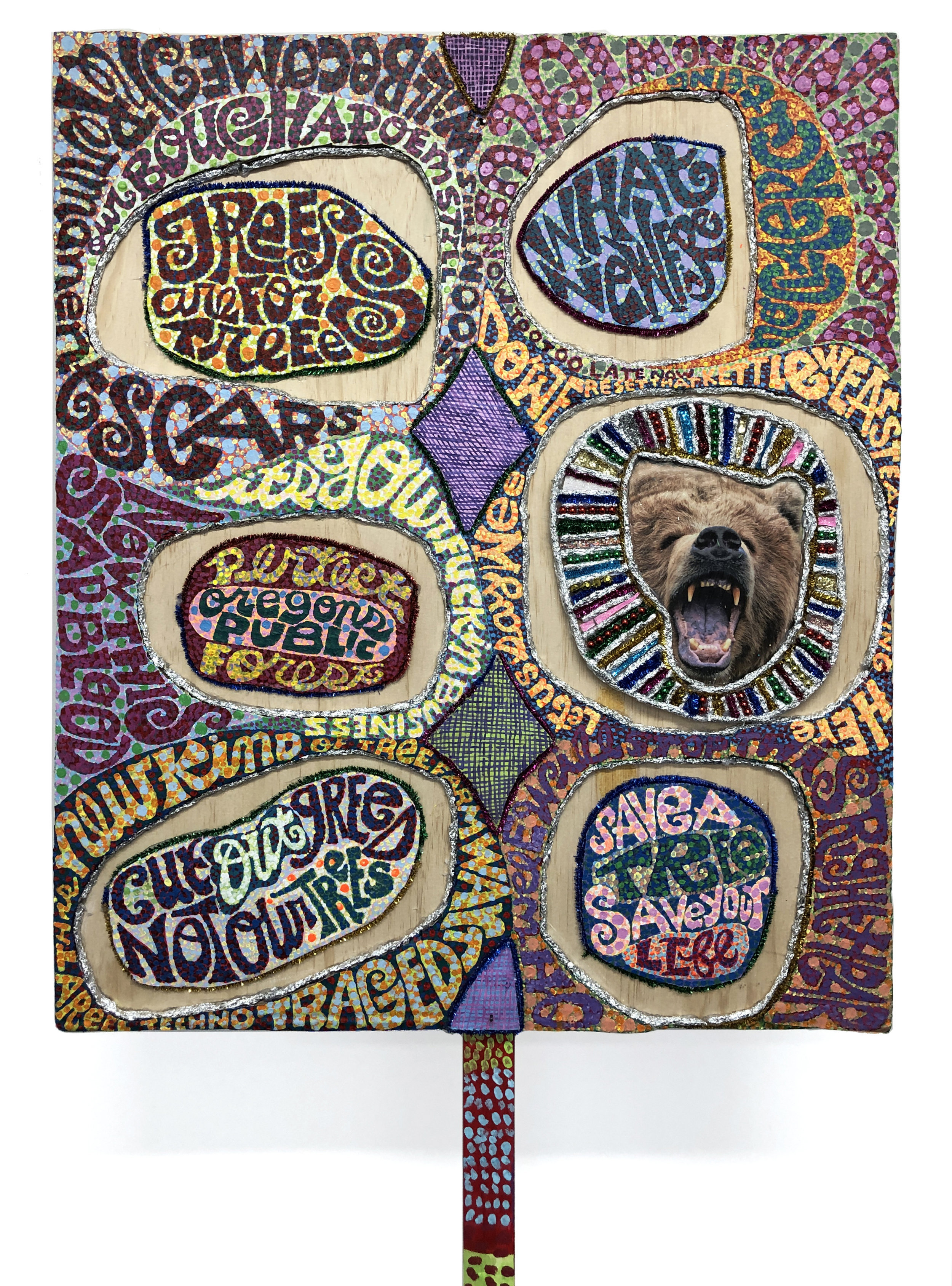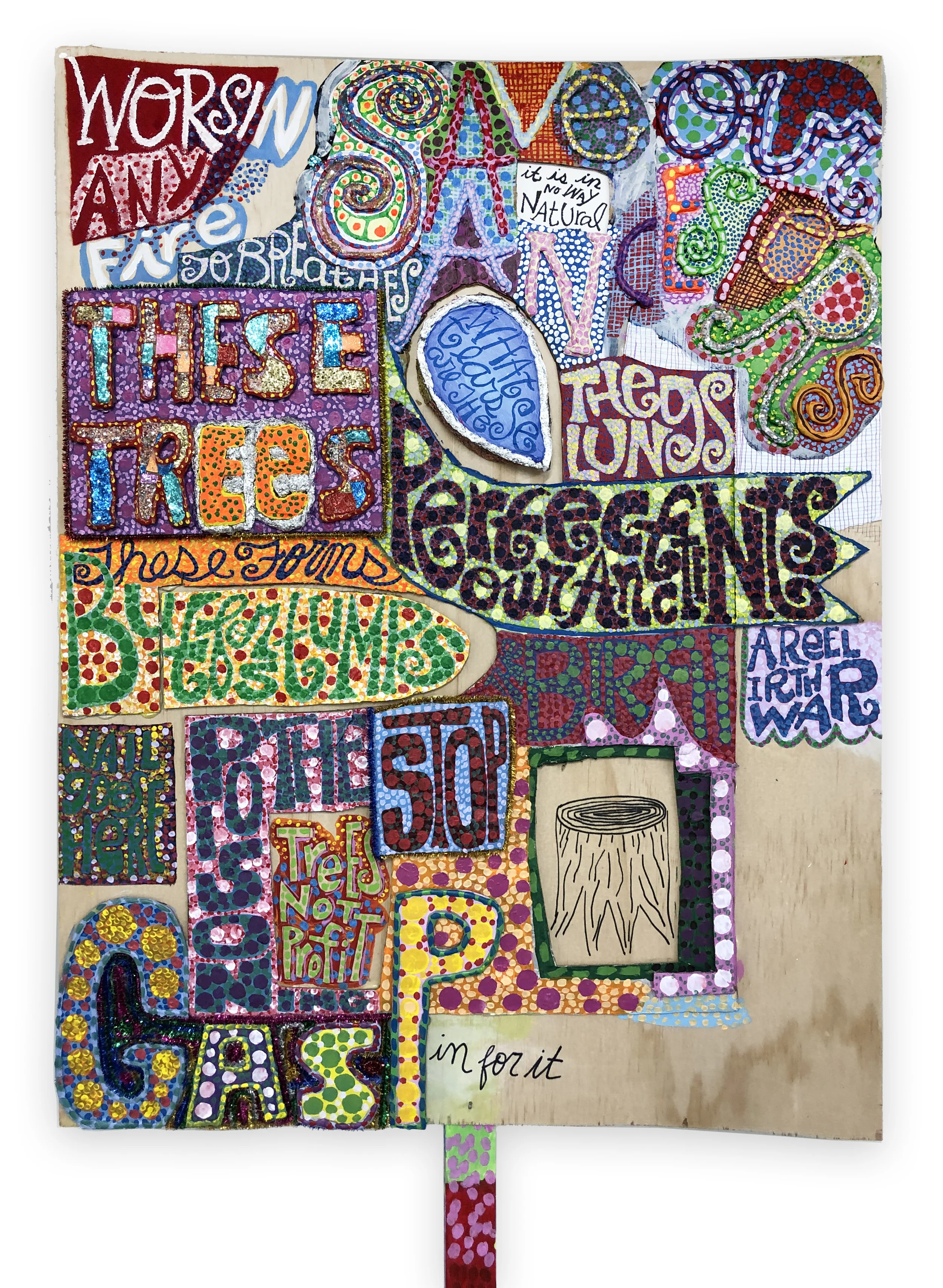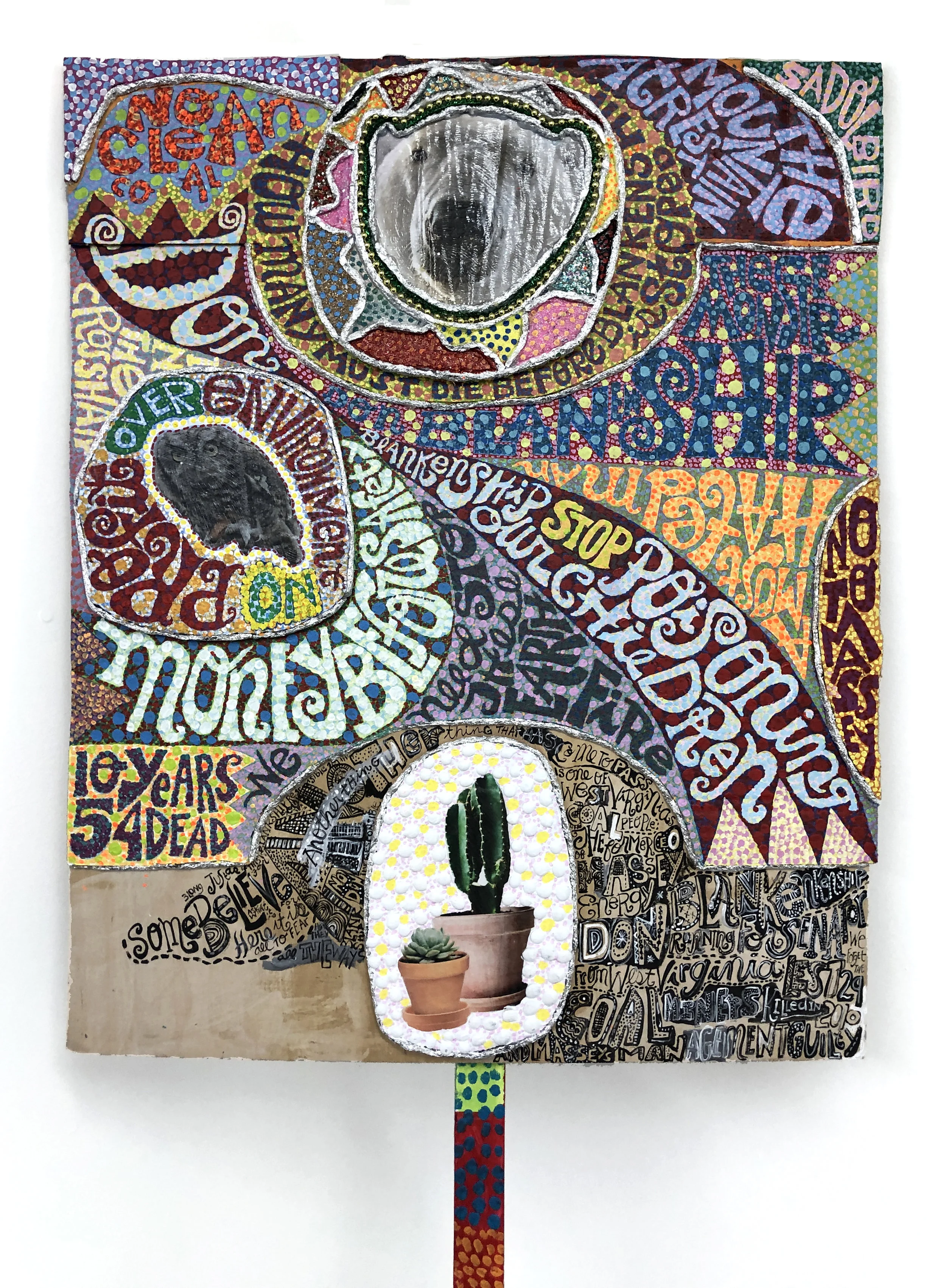
Off Site: Bruce Burris
Bruce Burris: We Will Shed Some Blood to Save Our Mountain!
A.L.S.O. (Shrine and Sargent’s Daughters)
April 28 - June 2, 2019

Installation View
Bruce Burris
We Will Shed Some Blood to Save Our Mountain!
A.L.S.O. (Shrine and Sargent’s Daughters)
April 28 – June 2, 2019
Valley Girl by Crystal Good
‘Cause we ain’t got no choice no time to wait
for the next industry. Damn didn’t we get degrees?
Coal miner’s daughter is now chemical plant step kid. Dear Mamma’s gettin’ divorced again. Pharmaceutical
pesticide love child — downsized without support. Gone
are brand new cars, money to spend on hotel rooms, Nike shoes.
Cross the county it’s true. Stability’s leaving town like rolling coal all we can do is stay — shelter in place.
In 1992, Bruce Burris moved to Lexington, Kentucky from the Bay Area and became acutely aware of the impact that extractive industries, particularly coal, were having on the region. In his own words, “I am concerned for the aftereffects here, those ways in which we abandon the environmental, educational, and community aspirations of those who remain after an industry moves on. Additionally, it is important for me to say that though my work sources topics which are important and often controversial my interest is in voicing ideas and I am not interested so much in perceptions of right versus wrong—it’s more about here we are and how can we respectfully dig our way out of this jam.”
In an effort to engage these immediately regional concerns, Burris founded ELandF Gallery in 2005, a self-described small projects accelerator that paid artists to stage performances of their work in various public settings. He also created his own interventions, hiring actors to reenact protests or gatherings he had seen in the newspaper or online, often on the sites of homegrown advocacy groups. He was particularly drawn to the do-it-yourself quality of the protest materials and those events where things went “haywire.” Burris’s protest signs directly reference these groups but take the form of drawings and paintings and are built on a visual scaffolding of language and found imagery. Writing is pervasive in almost all of his work but is particularly essential here, in objects that literally communicate the complex realities and human toll of certain modern industries.
The First Amendment protects the “the right of the people peaceably to assemble, and to petition the Government for a redress of grievances.” Our founding fathers might not have imagined this right to be exercised by women wearing trademarked “pussy hats” or envisioned anything that falls under the auspices of performance art, but they clearly understood its potential value. Protest is by nature, a call to change, not the change itself, and there is a great deal of debate on the ultimate efficacy of protest to impact lasting progress. This dilemma is at the core of Burris’s work—an acknowledgement of the simultaneous potential and impossibility of an individual or small group to enact lasting change.

Bruce Burris, No Mountain Murder, 2014, acrylic on found yard sign, 24 x 28.25 inches

Bruce Burris, Cut Out Greed Not Our Trees, 2018-2019, mixed media assemblage, 28.5 x 24.25 inches

Bruce Burris, These Trees, 2018-2019, mixed media assemblage, 31.5 x 24 inches

Bruce Burris, No Clean Coal, 2018, mixed media assemblage, 30 x 24.5 inches

Bruce Burris, Now This Ol' Catfishery, 2018, mixed media on paper 24 x 85.5 x 1 inches

Installation View

